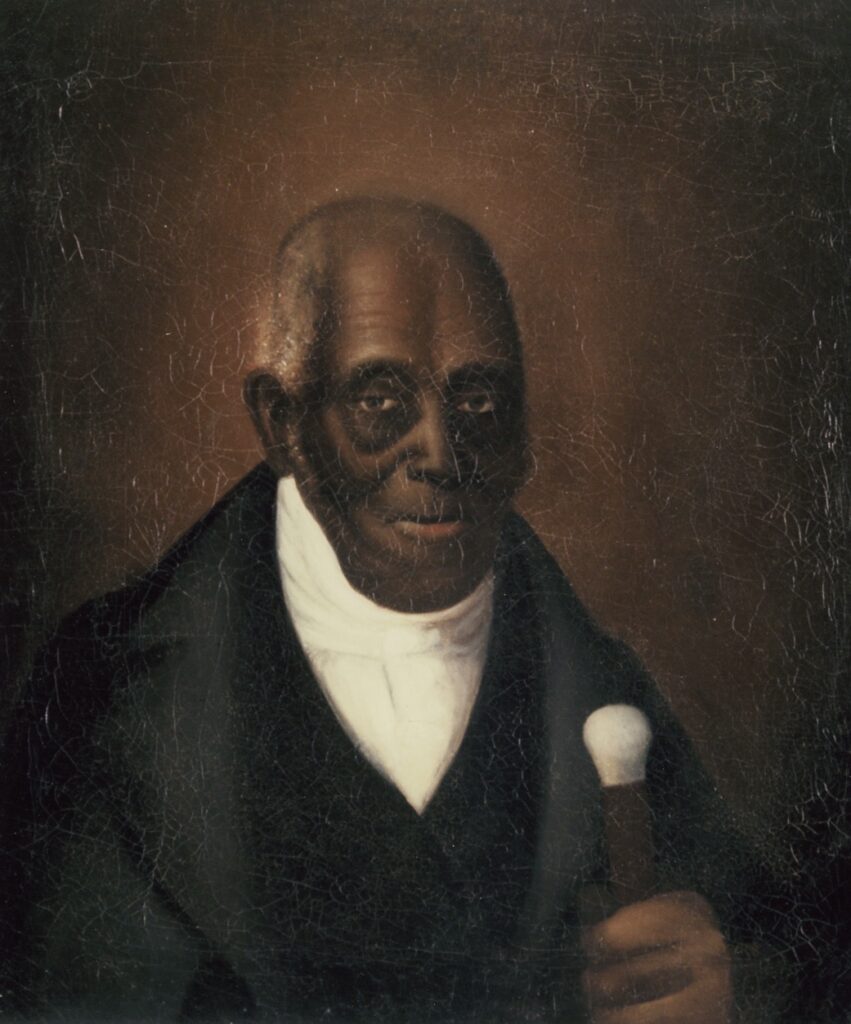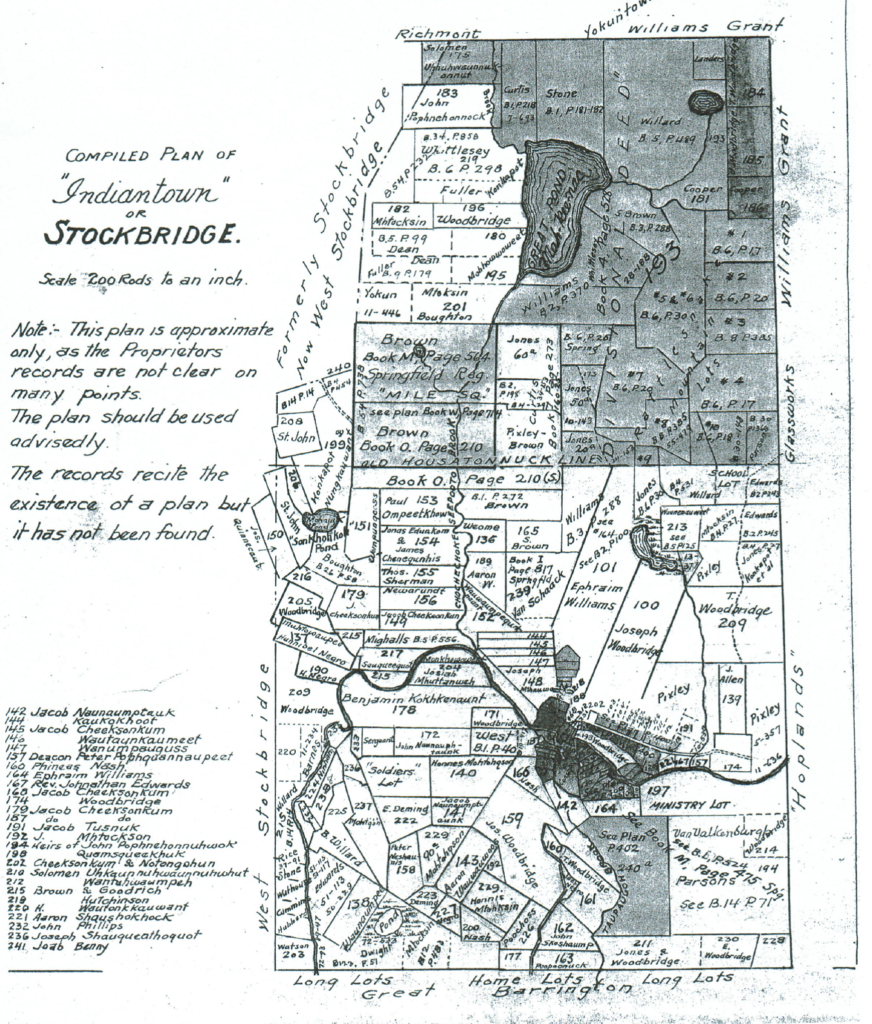Welcome to Bidwell Lore number 136! We continue our Agrippa Hull series this week with a post about the land acquired by Joab Benney and his connection to Agrippa Hull.

Joab Benney’s Property in Stockbridge
Rick Wilcox, 2022
As we said at the end of last week’s article, the colonial government in Boston set up an Indian Proprietorship so that the Mohican community could control the distribution of land in Stockbridge; however, it did not always work that way. As we know from the preceding paragraphs, it was a system that, at times, could be manipulated. In theory, all the members of the tribe were proprietors, but in practice, the tribal sachems met on a regular basis and voted to grant land to members of the tribe. As a practice, the proprietors granted land to free blacks at no cost. In Joab Benny’s case, the deed seems to suggest that John Skushawmh might have been in financial difficulty or poor health.
Notwithstanding those possibilities, it violated the legal terms of the proprietorship, a battle that was fought by the Mohican people for their entire time in Stockbridge. Within fifty years they were dispossessed of 23,040 acres of land. At the end of the Revolutionary War, George Washington, as a thank you for their service during the war, provided the tribe with an 1100-pound ox to be roasted as part of a community celebration. That celebration took place in Ice Glen at the home site Capt. Solomon Uhhaunnauwaunmut, who had died during the Revolutionary War. It seemed especially ironic that they began the first leg of their trail of tears only a few months later, walking 160 miles to what became New Stockbridge, New York, on land gifted to them by the Oneida people. Members of the Oneida tribe, the only tribe of the Six Nations to support the Patriot cause, came during the Revolutionary War to Stockbridge seeking refuge from possible reprisals from their former allies.
Page 78 of the Indian Proprietor Records reflects a portion of one proprietors meeting in 1754/55: “6 voted and granted to Sarah the Daughter of Kokhkunnausquoh a small piece of Meadow Land lying upon the river in the bow of the river below Solomon’s lot [1] and adjoining Thereto. 7 voted to George Mitetum the fifty acres of Land laid out by Isaac Tattleton and not allowed him by the proprietors The said George admitted upon the act of court of admitting strange Indians of other Tribes. 8 voted and granted to Joab Beny [2] Thirty acres of the common Land in the Town of Stockbridge to be taken up according to the votes of the proprietors. 9 voted to Humphry Negro fifty acres of the common and undivided Land within the Town of Stockbridge to be taken up according to the votes of the proprietors.”
At that meeting, Benny was granted thirty acres of common land. Common or undivided land was land in Indian Town that had not yet been granted to anyone. The grant was a gift of land from the tribe. Also note that Humphrey Negro was given fifty acres in the common and undivided land. George Mitetum was not a Mohican. The great and general court, when setting up the proprietorship, allowed the granting of land to Indians who were not members of the Mohican tribe with the stipulation that they had to live on the land, improve it, and if they left town the land would revert back to the proprietorship.

Benney was well-suited to operate a tanning business, as the east border of his property ran parallel with Konkapot brook and he was likely surrounded by mature Hemlock trees, the most common climax forest in the Berkshires at that time, which was a source of tannin for his operation. Bordering Benney on the north was Stephen Nash, who had been given fifty acres by the Stockbridge Mohicans. There was some speculation that he also learned the blacksmith trade from Nash. [3]
25 years after the initial gift of land to Benney, you will see on page 152 of the Indian Proprietor Records from 1780 a note about the disposal of that same land:
2ly Voted to and Granted to Hannah Shukaunoh Four Acres of Land to be Taken up in the Common or undivided Land some where on Monument Mountain
3ly Voted to adjourn this Meeting to Monday the Seventh Day of Instant May at Two of the Clock in the afternoon at the House of Hendrick Ampaumut
The Proprietors Met according to adjournment on the fifteenth Day of May [4] & Passed the following Votes (viz.)
First Voted that Joab Benney have Liberty to Dispose of his thirty acre Grant of land, his paying the proprietors what shall be adjudged worth in natural state by Mr. John Sergeant & Timothy Edwards [5] Esq. –
2ly Voted that Mr. John Sergeant [6] be appointed to Settle with Joab about pay and Reserve the same and Dispose of the money as the proprietors shall order –
3ly Voted that Mr. Sergeant pay (out of the money he shall reserve of Joab Benney) to Mr. Ehilu Parsons a Twelve Schilling note which the said Parsons has against Abraham Naumaumpehouh whenever he shall Received said money –
4ly Voted and Granted to Catharine the wife of Kusk the fifty acre lot formerly Granted to John Peethoup and Taken up by him on which the said Catharine now lives –
Looking at Indian Proprietor Records from 1768, we see another plot of land deeded to a new Black man on page 79:
August 3: 1768 Surveyed and laid out by Thomas Williams for Timothy Woodbridge Esq. by order of the proprietors of the common and undivided Land in the Township of Stockbridge a lot of land containing fifty acres bounded and Surveyed as follows (viz.) Beginning in or at the west line of a Lot containing Sixty three acres Three quarters of an acre and Sixteen rods originally laid out by Coll Timothy Dwight designed for Muttauwaumpeh who choosing to take his pitch in another place resigned said lot to the proprietors and said proprietors afterward granted the said Lot to Hunnibel a Negro man who married an Indian woman upon which lot said Hunnibel lives Said fifty acres begins Twenty rods South of the Northwest corner of said Hunnibel’s said lot and from said line running west 13 degrees North Twenty one rods. Thence North 13 degrees East one hundred rods, Thence East 13 degrees South Eighty One rods, Thence South 13 degrees West thirty rods: Thence East 13 degrees South Twelve rods and a half Thence South 10 degrees East Thirty rods: Thence South 30 degrees East until it strikes the North line of said Hunnibel’s said Lot. One rod in Thirty allowed as usual for swag [7] of chain Thomas Williams Surveyor.
Joab Benney and his wife Rose had six children: Cynthia, born Nov 18, 1759; Zilpah, born Oct 31, 1762; Leah, born May 25, 1766; Farner (Probably Tamar) born Nov 1, 1767; and Rebecca, born June 23, 1771; and Clamira. [8] Young Agrippa Hull also joined the family by 1766.
The Massachusetts Tax List of 1771 shows that Joab Benney owned the following: 2 horses, 2 oxen, 3 cattle, 2 swine, and other assets counted in grain and tillage. Bathsheba Hull, who you may remember was Agrippa Hull’s mother, likely knew Joab from the church in Northampton where they were both members, and might have felt after the death of her husband that Agrippa would be in safer hands with Joab Benny and his family.
Electa Jones writes: After the birth and death of several infants, Rose came to Dr. West [9] to request admission to the church, thinking that God had slain her children in anger, because of her neglect of this duty. The instructions of Dr. West upon the subject, not only led her to see her unfitness for church membership, but the real alienation of her heart from God, and were blessed to her conversion. She united with the church, and even after adorned her profession. After her death, Dr. West published an account of her Christian life and experience in the ‘Theological Magazine’.”
Rose Benny was admitted to the Congregational Society on November 24, 1771.
Next week we will get back to the story of Agrippa Hull’s early years.
1. Ice Glen.
2. Spelled Beny, Binny, Benney, Beny, and other possible variations. In his will, it was spelled Benney.
3. Piper, Emilie and Levinson, David. One Minute a Free Woman: Elizabeth Freeman and the Struggle for Freedom (Salisbury, CT: Upper Housatonic National Heritage, 2010).
4. 1780.
5. Eldest son of the Rev. Jonathan Edwards.
6. Son of the Rev. John Sergeant.
7. The way it works is the measurement by the chain is longer than the actual straight line plane measurement because the chain sags and also because of hills. So, you have to subtract the “swag” to adjust the measured length to approximate the “actual length.” Rob Hoogs, Monterey, immediate past President of the Bidwell House Museum Board.
8. Berkshire Athenaeum Historical Room, Emily Piper Collection Box 3, Blacks.
9. Rev. Stephen West, the third Missionary Minister to Stockbridge.